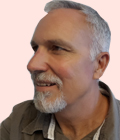
|
Nicholas Pinfold
Lecturer
Cape Peninsula University of Technology
South Africa
Biography
Lecturer: Cape Peninsula University of Technology
Cape Town, South Africa. Master’s Degree in Urban and Regional Planning - University of the Free State. B Honours Spatial Planning - University of the Free State. B. Tech Surveying - Cape Peninsular University of Technology. Registration: Professional GISc Practitioner, Professional Engineering Survey Practitioner
Abstract
Community Mapping in Informal Settlements for Better Housing and Service Delivery, Cape Town, South Africa
This paper reports on the Flamingo Crescent informal settlement community mapping project in Lansdowne Industrial Park, Cape Town, South Africa. The first phase of the project was undertaken in 2013. Community leaders and Informal Settlers Network (ISN) members worked closely with students from the Cape Peninsula University of Technology in a problem based service learning project. The second phase of the project involved community-led layout design to facilitate re-blocking of structures. Subsequently the physical re-blocking of Flamingo Crescent informal settlement has been completed. The third phase involves iterative community mapping and building of Geographic Information over time so that community dynamics and undercurrents can be analysed. Mapping is one of several tools used to help poor communities gain an understanding of their own capacity and recourse for improved living conditions. Community mapping empowers residents to negotiate for themselves. It aims to create learning and understanding in partnership with residents, community based non-government organisations, local government and academia. Physical aspects of the community are enumerated while matters such as social organisation, culture and belief of people recorded. Community mapping is intended to create communal awareness and social constructivism through the process of participation. When people contribute and participate it creates confidence that allows communities to negotiate rather than to engage in service delivery protests. Community mapping begins with community-led survey and enumeration, looking at the relationship between the things being mapped, such as dwellings, drainage, vegetation, paths and tracks and spaces in the community. Some of these spaces are functional and have aesthetic or social value for the residents. It is important to identify these spaces and try to explain why they are successful and why others are not. Open spaces are usually dominated by local activities and occupied by a large number of residents who, to some degree, share facilities. These places hold the physical frame that provides the social fabric of the area. Quality space allows activity that adds quality to the entire area. Without these places life in the community will be very different. Community-led mapping helps community members to identify and analyse potential within their community, where and what are problems that need attention. Enumeration involves the gathering of information such as people savings, healthcare services, community welfare, and disaster mitigation.
|

